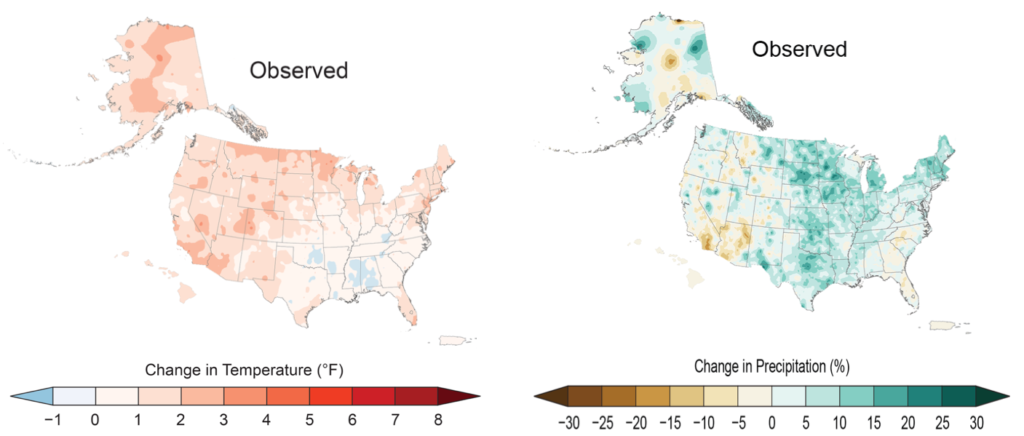Vision
This project aims to provide a detailed understanding of how global climate projections and downscaling techniques can explicitly address the challenges of nonstationarity, and be used to develop robust estimates of future changes in the distributions of temperature and precipitation at the scales of local civil infrastructure.
Nonstationarity: Unprecedented Shifts in Temperature and Precipitation Distributions
As dramatic changes in Earth’s climate system emerge, changes in temperature and precipitation distributions may occur that are without a historical analogue. There is a need for improved understanding of this nonstationarity in climatological distributions at spatial and temporal scales relevant for infrastructure and operations planning.

Projection at Local Scales:
Global climate models capture large-scale effects (typically with grid box sizes on the order of 100km), and provide information that interacts with the fine-scale (e.g. large-scale circulation) and informs the development of local projections. The specific risks faced at finer scales are not illuminated by these models alone; modeling and tools are needed to translate multi-model ensemble climate projections to the local-scale, while avoiding potential underestimation of risk to infrastructure and operations.
Funding
This project is funded by a contract from the Strategic Environmental Research and Development Program (SERDP) under Project RC19-1391.

